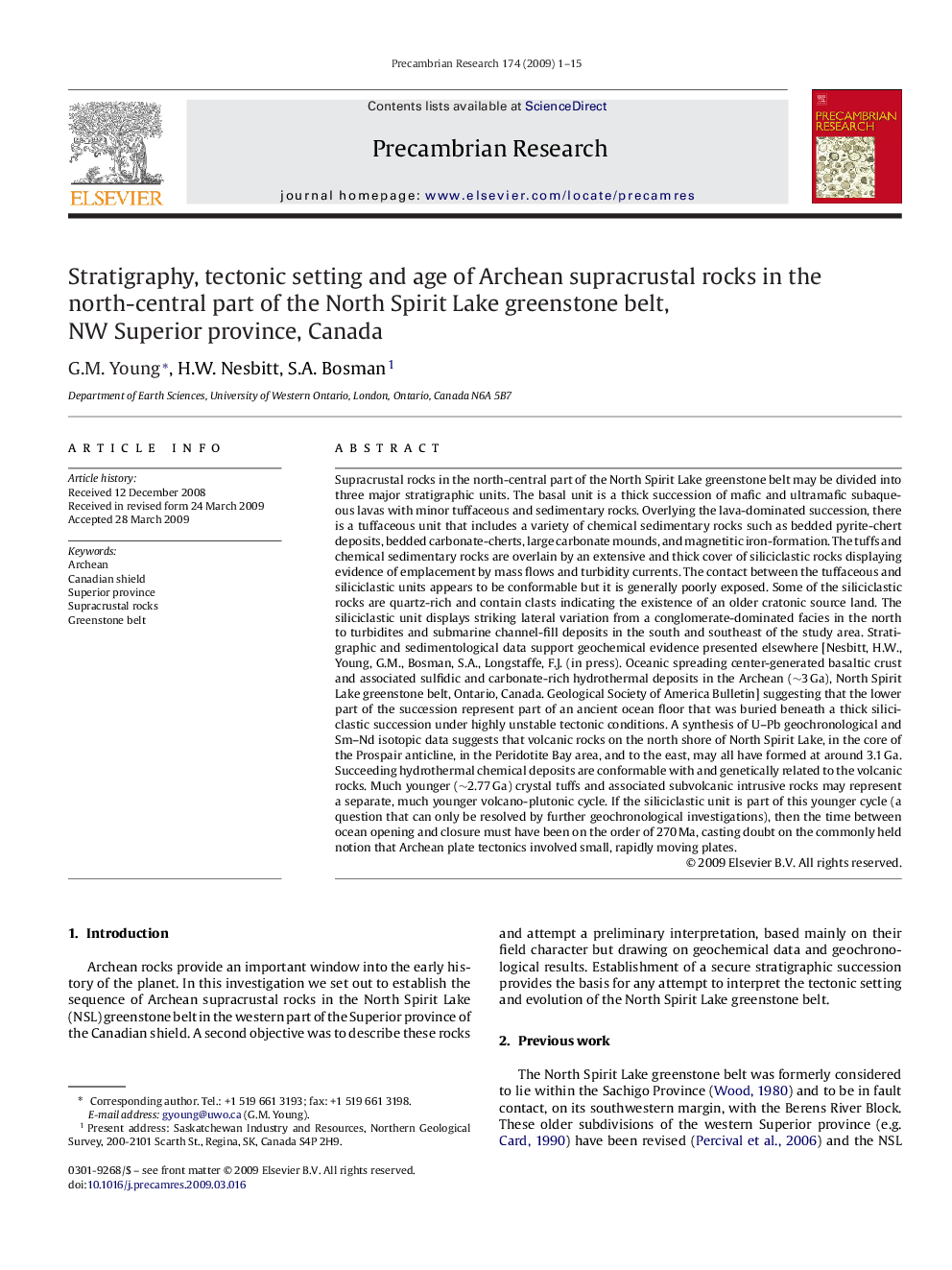| Article ID | Journal | Published Year | Pages | File Type |
|---|---|---|---|---|
| 4723945 | Precambrian Research | 2009 | 15 Pages |
Supracrustal rocks in the north-central part of the North Spirit Lake greenstone belt may be divided into three major stratigraphic units. The basal unit is a thick succession of mafic and ultramafic subaqueous lavas with minor tuffaceous and sedimentary rocks. Overlying the lava-dominated succession, there is a tuffaceous unit that includes a variety of chemical sedimentary rocks such as bedded pyrite-chert deposits, bedded carbonate-cherts, large carbonate mounds, and magnetitic iron-formation. The tuffs and chemical sedimentary rocks are overlain by an extensive and thick cover of siliciclastic rocks displaying evidence of emplacement by mass flows and turbidity currents. The contact between the tuffaceous and siliciclastic units appears to be conformable but it is generally poorly exposed. Some of the siliciclastic rocks are quartz-rich and contain clasts indicating the existence of an older cratonic source land. The siliciclastic unit displays striking lateral variation from a conglomerate-dominated facies in the north to turbidites and submarine channel-fill deposits in the south and southeast of the study area. Stratigraphic and sedimentological data support geochemical evidence presented elsewhere [Nesbitt, H.W., Young, G.M., Bosman, S.A., Longstaffe, F.J. (in press). Oceanic spreading center-generated basaltic crust and associated sulfidic and carbonate-rich hydrothermal deposits in the Archean (∼3 Ga), North Spirit Lake greenstone belt, Ontario, Canada. Geological Society of America Bulletin] suggesting that the lower part of the succession represent part of an ancient ocean floor that was buried beneath a thick siliciclastic succession under highly unstable tectonic conditions. A synthesis of U–Pb geochronological and Sm–Nd isotopic data suggests that volcanic rocks on the north shore of North Spirit Lake, in the core of the Prospair anticline, in the Peridotite Bay area, and to the east, may all have formed at around 3.1 Ga. Succeeding hydrothermal chemical deposits are conformable with and genetically related to the volcanic rocks. Much younger (∼2.77 Ga) crystal tuffs and associated subvolcanic intrusive rocks may represent a separate, much younger volcano-plutonic cycle. If the siliciclastic unit is part of this younger cycle (a question that can only be resolved by further geochronological investigations), then the time between ocean opening and closure must have been on the order of 270 Ma, casting doubt on the commonly held notion that Archean plate tectonics involved small, rapidly moving plates.
